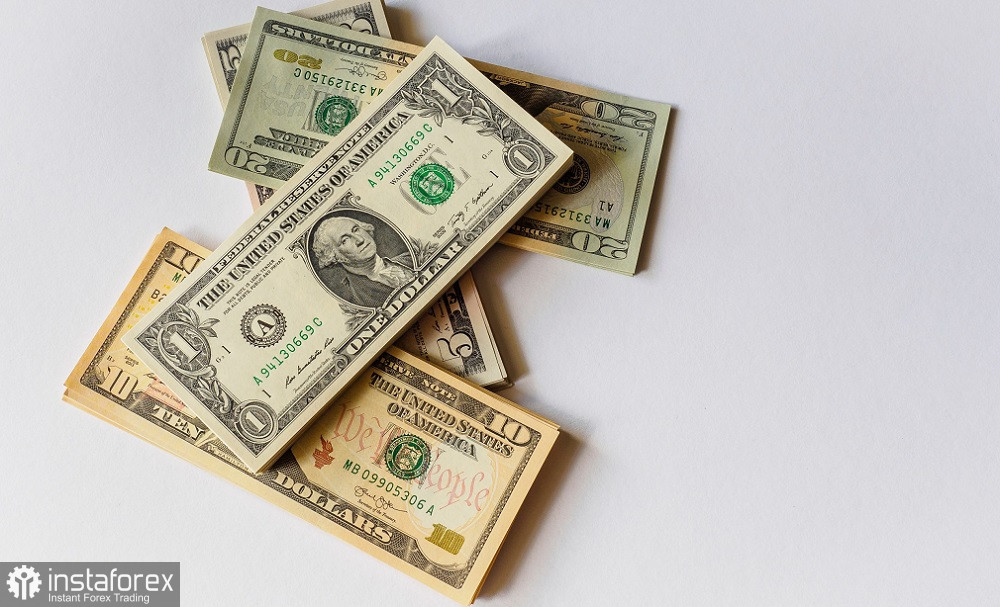The EUR/USD pair continues to test resistance at 1.1750. At this price point, the middle line of the Bollinger Bands indicator on the daily chart coincides with the Tenkan-sen and Kijun-sen lines. For the past three days, traders have been pressing against this barrier but repeatedly pulling back to the 1.1730 area, reflecting indecision on both sides of the market. On the one hand, bullish sentiment dominates (bears cannot even approach the 1.16 area), while on the other, most buyers lock in profits above 1.1750, after which sellers regain control. As a result, EUR/USD has been stuck in a 1.1710–1.1770 range despite the broader weakening of the dollar.

Notably, nearly all fundamental factors are in favor of the EUR/USD bulls. Weak U.S. labor market reports, stagnation of the core PCE index, accelerating inflation in the eurozone, and, ultimately, the government shutdown—all these either weigh on the greenback or support the euro. Against this backdrop, the indecisive stance of buyers looks illogical, given that the dollar is backed only by cautious comments from certain Federal Reserve officials (Beth Hammack, Lorie Logan) who oppose aggressive rate cuts. The U.S. currency also reacted positively to the ISM manufacturing index published yesterday, although only the headline figure was in positive territory. Most components (new orders, prices paid) reflected negative dynamics, highlighting worrying trends. Moreover, the headline index remained in contraction territory (49.1), even if slightly above expectations (49.0).
The Fed's position is also mixed. Indeed, Dallas Fed President Lorie Logan and Cleveland Fed President Beth Hammack expressed "moderately hawkish" views, citing persistent inflationary pressures. Hammack in particular noted that in her view inflation is now "a more serious problem than the labor market." She advocated for restrictive monetary policy "necessary to cool inflation." Logan echoed this, saying she intends to remain cautious about rate cuts.
At the same time, other Fed officials softened their rhetoric, reinforcing confidence that the central bank will cut rates twice more this year. Boston Fed President Susan Collins supported further easing "if incoming data justify such a decision," stressing that upside risks to prices have weakened while risks to the labor market have grown. According to Collins, labor demand is expected to continue weakening, which will push unemployment higher.
Fed Vice Chair Philip Jefferson also voiced concerns about labor market conditions, which he believes "need support." He expressed confidence that price pressures will ease significantly early next year.
It is worth noting that the market maintains a dovish stance, ignoring the cautious and "moderately hawkish" remarks of some Fed officials. Traders are focusing instead on macroeconomic indicators pointing to a cooling U.S. economy. The August JOLTS report showed a decline in hiring, while the September ADP report actually entered negative territory for the first time since December 2020. According to the agency, private-sector employment fell by 32,000 last month, with the August figure revised down from +50,000 to -3,000.
The Conference Board's consumer confidence index further worsened the outlook for the greenback, falling to 94.2 versus a forecast of 96.0. While the decline may seem minor, it marked the second consecutive monthly drop and the weakest reading since April. The report's structure showed a deterioration in perceptions of current conditions—the Present Situation Index fell by 7 points to 125.4. The Expectations Index fell to 73.4, remaining below the 80-point threshold since February and signaling rising recession risks.
Cautious remarks from some Fed representatives were insufficient to outweigh the heavy flow of macroeconomic data, leaving overall market sentiment dovish and exerting steady pressure on the dollar. According to the CME FedWatch tool, the probability of a 25-basis-point cut at this month's FOMC meeting is 99%, with an 85% chance of another cut in December. Moreover, markets are pricing in a 40% probability of a further 25-basis-point cut at the January meeting.
The rise in dovish expectations adds further pressure on the U.S. currency.
Adding to this, the government shutdown that began on Wednesday is expected to be prolonged, given the uncompromising stance of both Democrats and Republicans, who refuse to make concessions. According to preliminary White House estimates, the shutdown will cost about $15 billion in weekly GDP losses.
Thus, the overall fundamental backdrop favors further growth in the EUR/USD. However, long positions should only be considered once the pair consolidates above resistance at 1.1750 (the middle line of the Bollinger Bands, coinciding with the Tenkan-sen and Kijun-sen lines on the daily chart). The next bullish targets lie at 1.1800 and 1.1850 (the upper boundary of the Kumo cloud on H4 and the upper line of the Bollinger Bands on D1, respectively).





















